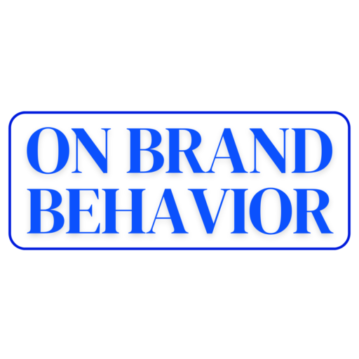People don’t buy products—they buy emotions, experiences, and identity. The brands that succeed aren’t just the ones with the best features or lowest prices, but the ones that make people feel something.
Think about the brands you’re loyal to. Is it just about their product, or do they represent something deeper for you? Whether it’s Nike inspiring ambition, Apple making you feel innovative, or Coca-Cola triggering nostalgia, these brands have mastered emotional branding.
Let’s break down how you can use emotional triggers to build a brand that people don’t just buy from—they connect with.
Why Emotion is the Most Powerful Branding Tool
Science proves that emotion drives decision-making. People make purchases based on how they feel and then justify those decisions with logic.
A study by Harvard professor Gerald Zaltman found that 95% of purchase decisions happen subconsciously, meaning most people aren’t even aware of the emotional influences behind their choices.
If your brand doesn’t trigger an emotion, you’re competing purely on logic and features—which is a race to the bottom.
The 5 Emotional Triggers That Make Brands Unforgettable
1. Identity & Belonging: “This Brand Represents Me”
People buy from brands that align with their identity and values. If your brand reflects who they are (or who they aspire to be), they’ll develop a deep connection with it.
Examples:
• Nike doesn’t sell shoes—it sells the identity of an athlete. The slogan “Just Do It” makes every customer feel like they’re part of an elite, motivated community.
• Harley-Davidson’s branding is about rebellion and freedom—owning a Harley is more than a motorcycle, it’s a lifestyle choice.
• Patagonia attracts customers who value sustainability. Buying from them feels like an environmental statement.
Brand Strategy:
• Define who your brand is for and what it represents.
• Make your brand feel like a movement, not just a company.
• Align with values that create a sense of belonging among customers.
When people see your brand as a part of their identity, loyalty becomes automatic.
2. Nostalgia: “This Feels Familiar and Safe”
People are wired to feel comfort and trust in things that remind them of positive past experiences. Nostalgia is a powerful branding tool because it creates a deep emotional bond.
Examples:
• Coca-Cola’s holiday commercials focus on family traditions and togetherness, making the brand feel timeless.
• Nintendo regularly re-releases classic games because nostalgia keeps customers emotionally invested.
• Throwback packaging and vintage branding (Pepsi, McDonald’s, Adidas) make people feel connected to a simpler time.
Brand Strategy:
• If your brand has history, lean into it.
• Use classic design elements to trigger familiarity.
• Reference past cultural touchpoints that your audience connects with.
Nostalgia makes brands feel timeless and emotionally safe.
3. Trust & Security: “I Know I Won’t Regret This”
Trust is one of the strongest emotional triggers because people fear making bad decisions. If your brand eliminates uncertainty, customers will feel safe choosing you.
Examples:
• Apple users don’t question new product launches because they trust Apple’s track record.
• Amazon’s hassle-free return policy reduces buyer hesitation.
• McKinsey’s elite reputation makes high-paying clients feel secure in their investment.
Brand Strategy:
• Show expertise and consistency—people trust brands that feel established.
• Use social proof (testimonials, case studies, numbers) to reinforce reliability.
• Remove risk with money-back guarantees or transparent policies.
People want to feel confident that they’re making the right choice. Build trust, and they’ll choose you without hesitation.
4. Desire & Aspiration: “This Brand Elevates My Status”
People buy brands that make them feel successful, attractive, or high-status. If a product enhances how someone sees themselves, they’re willing to pay a premium.
Examples:
• Rolex isn’t just a watch—it’s a symbol of success.
• Tesla owners don’t just buy a car—they buy a vision of the future.
• Luxury fashion brands use high prices to create exclusivity and desirability.
Brand Strategy:
• Position your brand as something people aspire to be associated with.
• Use premium branding, messaging, and scarcity to increase perceived value.
• Make customers feel like they’re part of an exclusive group.
When people believe your brand enhances their identity, price becomes irrelevant.
5. Happiness & Joy: “This Brand Makes Me Feel Good”
Sometimes, branding doesn’t have to be deep—it just has to make people happy. Brands that create positive emotional experiences become a natural go-to choice.
Examples:
• Disney’s entire brand is built on happiness, wonder, and nostalgia.
• Starbucks creates a cozy, feel-good experience that keeps customers coming back.
• Ben & Jerry’s branding is fun, colorful, and lighthearted—people associate it with good times.
Brand Strategy:
• Use playful, uplifting branding and messaging.
• Create experiences that make people smile, laugh, or feel relaxed.
• Align with moments where people are already feeling positive.
People remember brands that make them feel good.
How to Apply Emotional Triggers to Your Brand (Right Now)
✅ Align your brand with an identity that people want to be part of.
✅ Tap into nostalgia to create deep emotional connections.
✅ Make your brand feel safe, trustworthy, and regret-proof.
✅ Use exclusivity and aspiration to drive desire.
✅ Create positive emotional experiences that people want to return to.
Brands that connect emotionally don’t just get customers—they get lifelong brand advocates.
What’s Next?
If you want to learn how to apply emotional triggers to build a stronger, more influential brand, check out On Brand Behavior’s resources.
What’s a brand you feel emotionally connected to? Let’s discuss.
